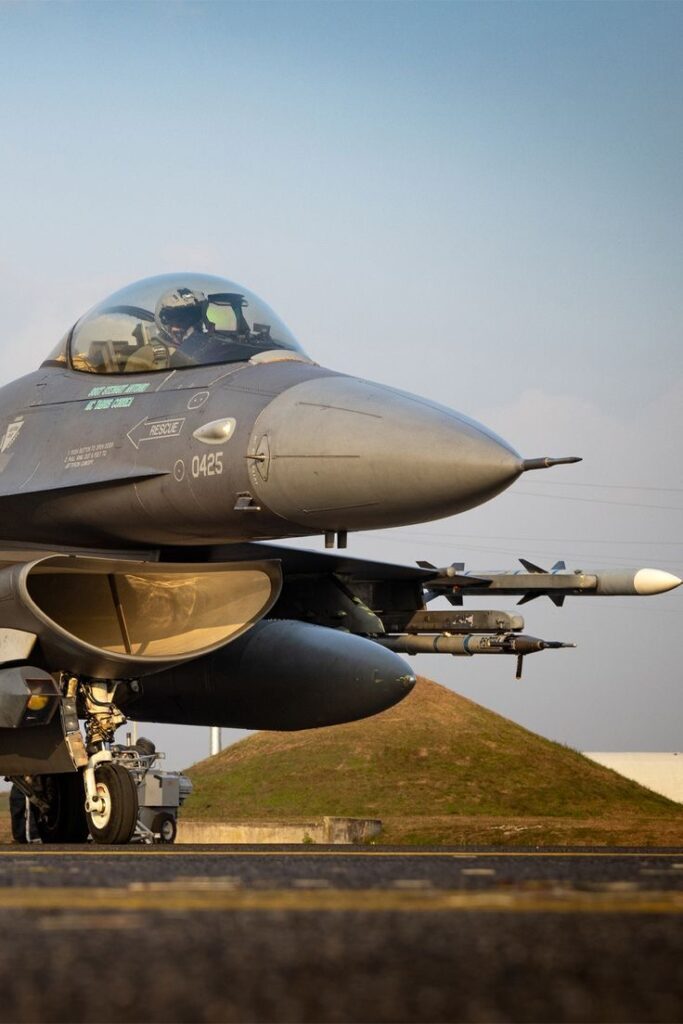
F-16 Raptor
The F-16 Fighting Falcon, often mistakenly referred to as the “F-16 Raptor,” is one of the most successful multirole fighter aircraft in modern aviation history. While the “Raptor” name officially belongs to the F-22, the F-16 itself has earned legendary status due to its versatility, agility, and widespread service across the globe. Since its introduction in the late 1970s, the F-16 has proven itself as a cornerstone of air power, operated by more than two dozen nations and continuously upgraded to meet new challenges.
Origins and Development
The F-16 was born out of the U.S. Air Force’s Lightweight Fighter Program in the early 1970s. Designers sought to create a smaller, more agile aircraft to complement heavier fighters like the F-15 Eagle. General Dynamics won the competition with a design that emphasized speed, maneuverability, and cost-effectiveness. The first F-16 entered service in 1978, and since then, more than 4,500 units have been built, making it one of the most produced modern jet fighters in the world.
Design and Capabilities
The F-16 is a single-engine, multirole combat aircraft capable of both air-to-air and air-to-ground missions. Its lightweight frame, blended-wing body design, and advanced aerodynamics give it exceptional agility, making it highly maneuverable in dogfights. The aircraft can reach speeds of over Mach 2 and has a combat radius exceeding 500 miles, depending on mission load.
Equipped with a bubble canopy for superior visibility, a side-stick control for precise handling, and advanced avionics, the F-16 was revolutionary when introduced. It features a fly-by-wire control system that allows pilots to push the aircraft beyond traditional stability limits. Over time, new variants have integrated improved radar, electronic warfare systems, precision-guided weapons, and enhanced engines.
Combat Record
The F-16 has seen action in numerous conflicts since the 1980s. It was heavily used in Operation Desert Storm in 1991, where it flew thousands of sorties. It has also been active in NATO operations, Middle Eastern conflicts, and counterinsurgency missions worldwide. Its multirole capability allows it to switch from dogfighting to bombing missions seamlessly, making it an invaluable asset on the battlefield.
Many air forces rely on the F-16 for both defensive and offensive operations. Israel, Turkey, Pakistan, and several European nations have employed the jet in combat, where it has demonstrated resilience, adaptability, and superior performance against a wide range of threats.
Global Reach and Longevity
One of the defining features of the F-16 program is its international presence. More than 25 countries operate the aircraft, with production lines and upgrade programs extending its service life well into the 21st century. The latest version, the F-16V “Viper”, incorporates cutting-edge avionics, AESA radar, and advanced cockpit systems to keep it competitive in modern air warfare.
Despite the introduction of fifth-generation fighters like the F-35 Lightning II, the F-16 remains a vital component of many air forces. Its proven combat record, cost-effectiveness, and adaptability ensure it will continue flying for decades to come.
Conclusion
Although sometimes confused with the F-22 Raptor, the F-16 Fighting Falcon—often nicknamed the “Viper”—has carved out its own place in aviation history. It is not just a fighter jet, but a symbol of reliable, versatile, and enduring air power. From its humble beginnings as a lightweight fighter to its role as a global multirole platform, the F-16 stands as one of the most iconic aircraft ever built.
Would you like me to adjust the title to the correct aircraft name (F-16 Fighting Falcon) or keep it exactly as F-16 Rapiter for your project?


